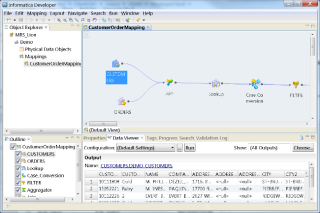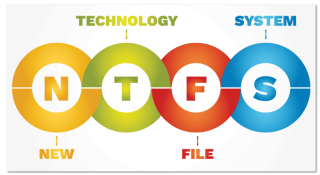How to Enable TLS 1.3 in Apache on Fedora 30
Using a Different System? TLS 1.3 is a version of the Transport Layer Security (TLS) protocol that was published in 2018 as a proposed standard in RFC 8446
Wiki.js is a free and open source, modern wiki app built on Node.js, MongoDB, Git and Markdown. Wiki.js source code is publicly hosted on Github. This guide will show you how to install Wiki.js on a fresh Fedora 28 Vultr instance by using Node.js, MongoDB, PM2, Nginx, Git and Acme.sh.
Requirements to run Wiki.js are the following:
A/AAAA records set upCheck the OS version.
cat /etc/fedora-release
# Fedora release 28 (Twenty Eight)
Create a new non-root user account with sudo access and switch to it.
useradd -c "John Doe" johndoe && passwd johndoe
usermod -aG wheel johndoe
su - johndoe
NOTE: Replace johndoe with your username.
Ensure that your system is up to date.
sudo dnf check-upgrade || sudo dnf upgrade -y
Set up the timezone.
timedatectl list-timezones
sudo timedatectl set-timezone 'Region/City'
Install required and useful packages.
sudo dnf install -y wget vim unzip bash-completion git
For simplicity, disable SELinux and Firewall.
sudo setenforce 0
sudo systemctl stop firewalld
sudo systemctl disable firewalld
Wiki.js requires Node.js 6.9.0 or later, so we will first need to install Node.js.
Install Node.js.
sudo dnf install -y nodejs
Check Node.js and npm versions.
node -v && npm -v
# v8.11.3
# 5.6.0
Wiki.js uses MongoDB as a database engine. According to that, we will need to install MongoDB on our server.
Install MongoDB.
sudo dnf install -y mongodb mongodb-server
Check the MongoDB version.
mongo --version | head -n 1 && mongod --version | head -n 1
# MongoDB shell version v3.6.3
# db version v3.6.3
Enable and start MongoDB.
sudo systemctl enable mongod.service
sudo systemctl start mongod.service
Wiki.js can run without any actual web server (such as Nginx or Apache). However, it is highly recommended to put a standard web server in front of Wiki.js. This ensures you can use features like SSL, multiple websites, caching, and others. We will use Nginx in this tutorial, but any other server will do, you just need to configure it properly.
Install Nginx.
sudo dnf install -y nginx
Check the version.
nginx -v
# nginx version: nginx/1.12.1
Enable and start Nginx.
sudo systemctl enable nginx.service
sudo systemctl start nginx.service
Configure Nginx as a HTTP or HTTPS (if you use SSL) reverse proxy for the Wiki.js application.
Run sudo vim /etc/nginx/conf.d/wiki.js.conf and populate it with the basic reverse proxy configuration below.
server {
listen [::]:80;
listen 80;
server_name wiki.example.com;
root /usr/share/nginx/html;
charset utf-8;
client_max_body_size 50M;
location /.well-known/acme-challenge/ {
allow all;
}
location / {
proxy_set_header Host $http_host;
proxy_set_header X-Real-IP $remote_addr;
proxy_pass http://127.0.0.1:3000;
proxy_http_version 1.1;
proxy_set_header Upgrade $http_upgrade;
proxy_set_header Connection "upgrade";
proxy_next_upstream error timeout http_502 http_503 http_504;
}
}
The only thing you need to change in the above config is the server_name directive, and potentially the proxy_pass directive if you decide to configure some port other than 3000. Wiki.js uses port 3000 by default.
Check the configuration.
sudo nginx -t
Reload Nginx.
sudo systemctl reload nginx.service
Securing your wiki with HTTPS is not necessary, but it is a good practice to secure your site traffic. In order to obtain an SSL certificate from Let's Encrypt we will use Acme.sh client. Acme.sh is a pure unix shell software for obtaining SSL certificates from Let's Encrypt with zero dependencies. That makes it very lightweight in comparison to some other ACME protocol clients that require a lot of dependencies to run successfully.
Download and install Acme.sh.
sudo mkdir /etc/letsencrypt
git clone https://github.com/Neilpang/acme.sh.git
cd acme.sh
sudo ./acme.sh --install --home /etc/letsencrypt --accountemail [email protected]
cd ~
Check the acme.sh version.
/etc/letsencrypt/acme.sh --version
# v2.7.9
Obtain RSA and ECDSA certificates for wiki.example.com.
# RSA 2048
sudo /etc/letsencrypt/acme.sh --issue --home /etc/letsencrypt -d wiki.example.com --webroot /usr/share/nginx/html --reloadcmd "sudo systemctl reload nginx.service" --accountemail [email protected] --ocsp-must-staple --keylength 2048
# ECDSA/ECC P-256
sudo /etc/letsencrypt/acme.sh --issue --home /etc/letsencrypt -d wiki.example.com --webroot /usr/share/nginx/html --reloadcmd "sudo systemctl reload nginx.service" --accountemail [email protected] --ocsp-must-staple --keylength ec-256
After running the above commands, your certificates and keys will be in:
/etc/letsencrypt/wiki.example.com/etc/letsencrypt/wiki.example.com_eccNOTE: Don't forget to replace wiki.example.com with your domain name.
After obtaining certificates from Let's Encrypt, we need to configure Nginx to take advantage of them.
Run sudo vim /etc/nginx/conf.d/wiki.js.conf again and configure Nginx as a HTTPS reverse proxy.
server {
listen [::]:443 ssl http2;
listen 443 ssl http2;
listen [::]:80;
listen 80;
server_name wiki.example.com;
root /usr/share/nginx/html;
charset utf-8;
client_max_body_size 50M;
location /.well-known/acme-challenge/ {
allow all;
}
# RSA
ssl_certificate /etc/letsencrypt/wiki.example.com/fullchain.cer;
ssl_certificate_key /etc/letsencrypt/wiki.example.com/wiki.example.com.key;
# ECDSA
ssl_certificate /etc/letsencrypt/wiki.example.com_ecc/fullchain.cer;
ssl_certificate_key /etc/letsencrypt/wiki.example.com_ecc/wiki.example.com.key;
location / {
proxy_set_header Host $http_host;
proxy_set_header X-Real-IP $remote_addr;
proxy_pass http://127.0.0.1:3000;
proxy_http_version 1.1;
proxy_set_header Upgrade $http_upgrade;
proxy_set_header Connection "upgrade";
proxy_next_upstream error timeout http_502 http_503 http_504;
}
}
Check the configuration.
sudo nginx -t
Reload Nginx.
sudo systemctl reload nginx.service
Create an empty document root folder, where Wiki.js should be installed.
sudo mkdir -p /var/www/wiki.example.com
Navigate to the document root folder.
cd /var/www/wiki.example.com
Change ownership of /var/www/wiki.example.com folder to user johndoe.
sudo chown -R johndoe:johndoe /var/www/wiki.example.com
From the /var/www/wiki.example.com folder, run the following command to download and install Wiki.js.
curl -sSo- https://wiki.js.org/install.sh | bash
You can run the following command in order to view the currently installed version of Wiki.js.
node wiki --version
# 1.0.78
Once the installation is completed, you'll be prompted to run the configuration wizard.
Start the configuration wizard by running.
node wiki configure
This will notify you to navigate to http://localhost:3000 to configure Wiki.js. If you have Nginx in front of Wiki.js, then it means you can open your domain name (e.g. http://wiki.example.com) instead of going to localhost.
Using your web browser, navigate to http://wiki.example.com and follow the on-screen instructions. All the settings entered during the configuration wizard are saved in the config.yml file. The configuration wizard will automatically start Wiki.js for you.
By default, Wiki.js will not start automatically after a system reboot. In order to make it start on boot, we need to setup PM2 process manager. PM2 comes bundled with Wiki.js as a local NPM module, so we don't need to install PM2 globally.
Tell PM2 to configure itself as a startup service by running:
/var/www/wiki.example.com/node_modules/pm2/bin/pm2 startup
Finally, save the current PM2 configuration by running the command: /var/www/wiki.example.com/node_modules/pm2/bin/pm2 save
Your Wiki.js instance runs as a background process, using PM2 as its process manager.
Using a Different System? TLS 1.3 is a version of the Transport Layer Security (TLS) protocol that was published in 2018 as a proposed standard in RFC 8446
¿Usando un sistema diferente? osTicket es un sistema de tickets de soporte al cliente de código abierto. El código fuente de osTicket está alojado públicamente en Github. En este tutorial
Using a Different System? WonderCMS is an open source, fast and small flat file CMS written in PHP. WonderCMS source code is hosted on Github. This guide wil
¿Usando un sistema diferente? October 1.0 CMS es un sistema de gestión de contenido (CMS) simple y confiable, gratuito y de código abierto creado en el marco de Laravel
Using a Different System? MyBB is a free and open source, intuitive and extensible forum program. MyBB source code is hosted on GitHub. This guide will sho
Using a Different System? Redaxscript 3.2 CMS is a modern and ultra lightweight, free and open source Content Management System (CMS) with rocket-fas
¿Usando un sistema diferente? NGINX se puede utilizar como servidor HTTP / HTTPS, servidor proxy inverso, servidor proxy de correo, equilibrador de carga, terminador TLS o cachin
¿Usando un sistema diferente? ImpressPages CMS 5.0 es un sistema de gestión de contenido (CMS) simple y efectivo, gratuito y de código abierto, fácil de usar y basado en MVC
¿Usando un sistema diferente? Pagekit 1.0 CMS es un sistema de administración de contenido (CMS) hermoso, modular, extensible y liviano, gratuito y de código abierto con
Using a Different System? Gitea is an alternative open source, self-hosted version control system powered by Git. Gitea is written in Golang and is
Using a Different System? Paste 2.1 is a simple and flexible, free and open source pastebin application for storing code, text and more. It was initiall
¿Usando un sistema diferente? ProcessWire CMS 3.0 es un sistema de gestión de contenido (CMS) simple, flexible y potente, gratuito y de código abierto. ProcessWire CMS 3.
Using a Different System? Omeka Classic 2.4 CMS is a free and open source digital publishing platform and Content Management System (CMS) for sharing digita
¿Usando un sistema diferente? MODX Revolution es un sistema de gestión de contenido (CMS) de nivel empresarial rápido, flexible, escalable, gratuito y de código abierto escrito i
¿Usando un sistema diferente? TaskWarrior es una herramienta de gestión de tiempo de código abierto que es una mejora en la aplicación Todo.txt y sus clones. Debido a th
Using a Different System? Lychee 3.1 Photo Album is a simple and flexible, free and open source photo-management tool which runs on a VPS server. It install
Using a Different System? HTMLDoc will dynamically parse Postscript (PDF 1.6) documents from correctly written Hypertext (HTML 3.2). This will allow you t
Using a Different System? Matomo (formerly Piwik) is an open source analytics platform, an open alternative to Google Analytics. Matomo source is hosted o
¿Usando un sistema diferente? Couch CMS es un sistema de gestión de contenido (CMS) simple y flexible, gratuito y de código abierto que permite a los diseñadores web diseñar
Introduction MyCLI is a command line client for MySQL and MariaDB that allows you to auto-complete and helps with the syntax of your SQL commands. MyCL
ZPanel, un panel de control de alojamiento web popular, se bifurcó en 2014 a un nuevo proyecto llamado Sentora. Aprende a instalar Sentora en tu servidor con este tutorial.
Aprende cómo instalar Vtiger CRM, una aplicación de gestión de relaciones con el cliente, en CentOS 7 para aumentar tus ventas y mejorar el servicio al cliente.
Esta guía completa le mostrará cómo configurar un servidor Counter-Strike 1.6 en Linux, optimizando el rendimiento y la seguridad para el mejor juego. Aprende los pasos más recientes aquí.
Los ataques de ransomware van en aumento, pero ¿puede la IA ayudar a lidiar con el último virus informático? ¿Es la IA la respuesta? Lea aquí, sepa que la IA es una bendición o una perdición
ReactOS, un sistema operativo de código abierto y gratuito, está aquí con la última versión. ¿Puede satisfacer las necesidades de los usuarios de Windows de hoy en día y acabar con Microsoft? Averigüemos más sobre este estilo antiguo, pero una experiencia de sistema operativo más nueva.
Whatsapp finalmente lanzó la aplicación de escritorio para usuarios de Mac y Windows. Ahora puede acceder a Whatsapp desde Windows o Mac fácilmente. Disponible para Windows 8+ y Mac OS 10.9+
Lea esto para saber cómo la Inteligencia Artificial se está volviendo popular entre las empresas de pequeña escala y cómo está aumentando las probabilidades de hacerlas crecer y dar ventaja a sus competidores.
Recientemente, Apple lanzó macOS Catalina 10.15.4, una actualización complementaria para solucionar problemas, pero parece que la actualización está causando más problemas que conducen al bloqueo de las máquinas Mac. Lee este artículo para obtener más información
13 Herramientas comerciales de extracción de datos de Big Data
Nuestra computadora almacena todos los datos de una manera organizada conocida como sistema de archivos de diario. Es un método eficiente que permite a la computadora buscar y mostrar archivos tan pronto como presiona buscar.




